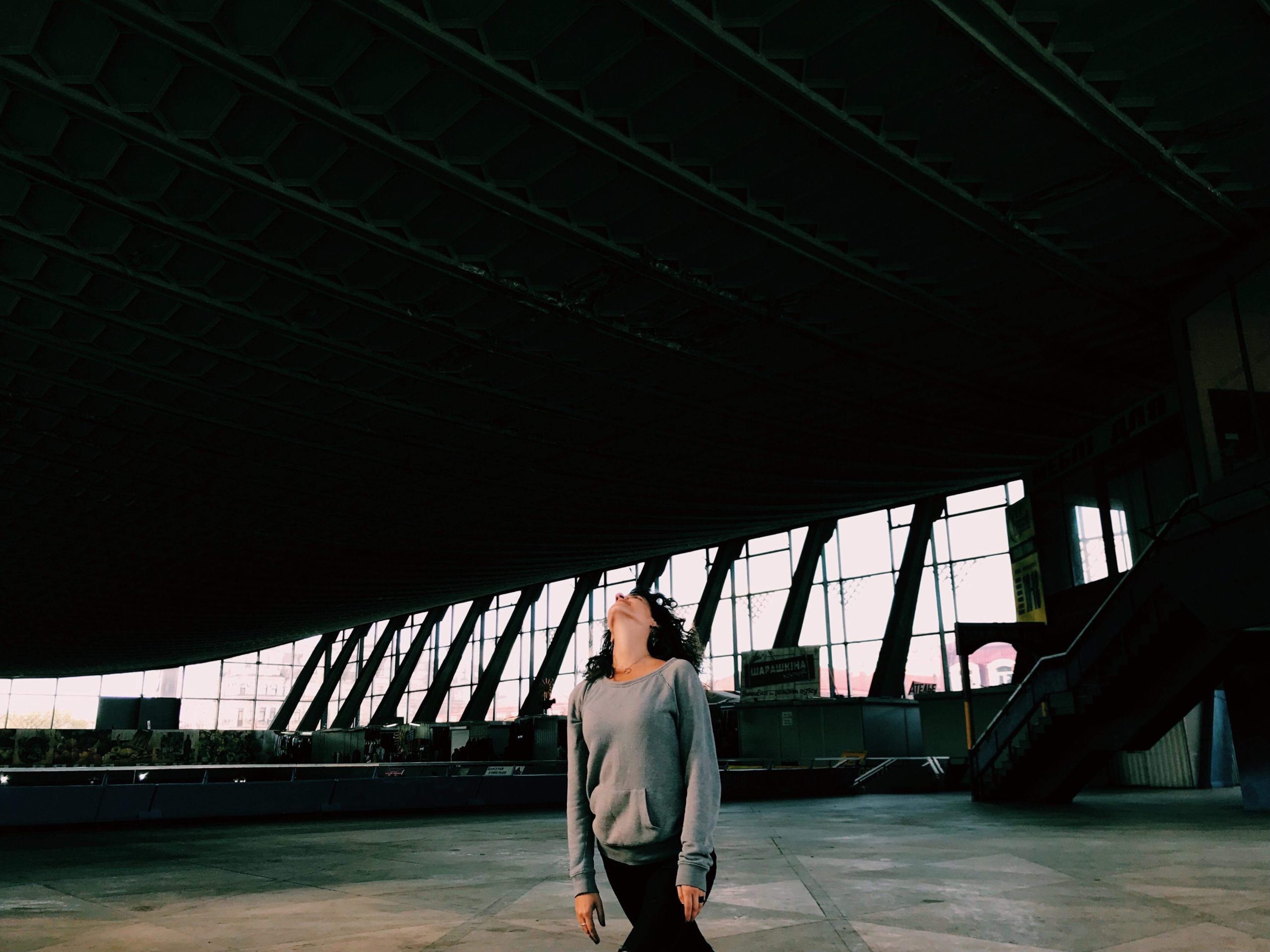
Meryl Murman in residency program. (Photo by: Hanna Hrabarska)
Travel restrictions during COVID-19 are not only complicating collaborations among New Orleans artists, but they are also severely reducing access to grants and residencies. Local choreographer and filmmaker, Meryl Murman, reveals the financial extent of these impacts and shines light on Zoom’s potential for collaboration.
The problems with funding the arts in New Orleans are not unique to COVID-19, as government and institutional support for local artists is already scarce. A common solution among performing artists is to relocate to Europe for part of the year through subsidized artist-in-residency programs. Popular among musicians and performance artists, these programs provide members with housing and meals in exchange for teaching a class in their field.
Going abroad gives artists access to funding and resources that are rarely available in New Orleans.
These trips are more out of necessity than leisure, and a running joke in the art community is that traveling “has been the hack” to surviving as an artist.
Murman acknowledges that the reality behind the joke is disturbing, but she also highlights the incredible opportunities she has had in Europe, such as working with the U.S. embassy in Ukraine.
Murman’s plan to continue her work with the embassy has come to a halt, but her collaboration project over Zoom is flourishing now more than ever. The necessity of Zoom this year for collaboration is completely unprecedented, and there is no way that Murman could have predicted this when starting her Zoom dance project a year and a half ago.
Featuring artists from three different parts of the world, the project delves into “this idea of connecting through loss, and embracing the glitch and embracing what is absent in the frame,” through dance. Aside from the topic’s extreme relevance to many artists’ experiences during COVID-19, continuing the project also provides a comforting sense of normalcy and consistency to life before the pandemic.
Looking into the near future, it is not clear whether traveling for collaborations and residencies will be cost effective for artists.
Murman elaborates that the cost of traveling may be dramatically higher after the pandemic, and that most European government art funds will be redirected toward general relief. While performance art collaborations are still possible over Zoom, Murman admits they will never replace the real physical experience. As the world predicts what will happen after travel restrictions end, artists are anxiously awaiting with their empty pockets and packed suitcases.
This piece is part of the on-going series “Creative Labor Through the Crisis,” which is part of a Creative Labor course at Tulane University taught by Dr. Vicki Mayer and Kelley Crawford. Quotes and information is taken from interviews completed by Dr. Vicki Mayer and Kelley Crawford.
 NOLAbeings Multimedia artist Claire Bangser created NOLAbeings as a portrait-based story project that marries...
NOLAbeings Multimedia artist Claire Bangser created NOLAbeings as a portrait-based story project that marries...  Voodoo in New Orleans: Reviving history: New Orleans fortune telling This article takes a deep dive into the history of Voodoo in New Orleans, its hybridization with Catholicism, and its present-day place in the city's culture. The author visits fortune-tellers in the French Quarter, using their guidance as a tool for introspection rather than a deterministic predictor of the future. Through her experiences in New Orleans, the author feels a mystical connection to both the past and the future.
Voodoo in New Orleans: Reviving history: New Orleans fortune telling This article takes a deep dive into the history of Voodoo in New Orleans, its hybridization with Catholicism, and its present-day place in the city's culture. The author visits fortune-tellers in the French Quarter, using their guidance as a tool for introspection rather than a deterministic predictor of the future. Through her experiences in New Orleans, the author feels a mystical connection to both the past and the future. 